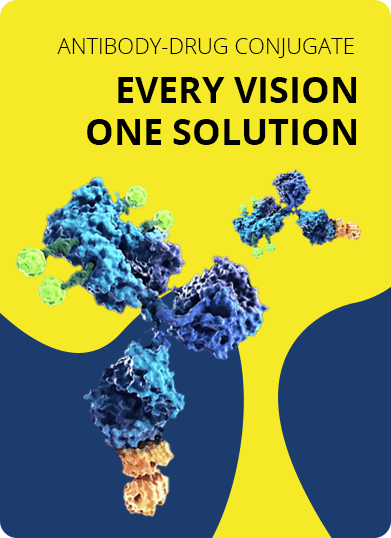- Home
- ADC Development
- DrugLnk™ Custom Linker-Payload Synthesis
- Drug Module Synthesis
- DNA Toxin Synthesis
DNA Toxin Synthesis Services
As an industrial pioneer in antibody-drug conjugate (ADC) development, Creative Biolabs offers customarily tailored ADC preparations with a variety of DNA-targeting toxins as payloads, including calicheamicins, doxorubicin, duocarmycin analogs, PBD-dimers, topotecan, bleomycin A2, dactinomycin, and mitomycin C.
DNA toxins
As one of the most fundamental bio-macromolecules, DNA is the carrier of the genetic information that governs all subcellular activities. Agents interfering with DNA structural integrity or the transcription machineries always lead to catastrophic effects on cell physiology and subsequently lead to cell death, making them ideal candidates for cancer chemotherapy and ADC development.
- DNA-reactive agents-- toxins fall into this category directly interact with the double-stranded DNA and introduce chemical changes, including double stranded DNA cleavage (DNA cleavers), base modification, intercalation (DNA intercalators), or DNA crosslinking. For example, Nitrogen mustards, a DNA-reactive agent, works via inducing immediate DNA alkylation on purine bases, resulting in stalled replication fork progression and promoting cell death by apoptosis. Other DNA-alkylating compounds applied in cancer treatment contain triazenes or nitrosoureas. These alkylate agents crosslink opposite DNA strands on the double helix, leading to the blockage of transcription and eventually, cell death.
- Antimetabolites-- DNA toxins in this category represent a group of anticancer drugs that mimic usual cellular molecules and interfere with DNA replication. A number of these agents are DNA antagonists whose activity is to hinder nucleotide metabolism pathways. There are several commonly used antimetabolite anticancer agents, such as the purine analogs 6-mercaptopurine, cladribine, and 8-azaguanine. Pyrimidine analogs 5-fluorouracil (5-FU), gemcitabine, and floxuridine also belong to this category.
- Topoisomerase Poisons-- A number of DNA toxins function by intervening DNA-protein binding. Topoisomerases are a group of enzymes responsible for the release of the torsional strain on DNA double helix. Upon the application of topoisomerase poisons, the DNA-enzyme intermediate is trapped as a complex. Topoisomerase poisons thus impede the religation of the break, restrain replication fork progression, and eventually induce toxic replication-associated DNA double-strand breaks (DSBs). The anthracycline antibiotics are a class of antineoplastic agents that poison topoisomerase II. They are also able to intercalate into DNA, thus exhibit strong antitumor potency. The anthracyclines daunorubicin and doxorubicin are widely applied to treat breast cancer, soft tissue sarcomas, small-cell lung tumors, and myeloblastic leukemias.
DNA toxin bases ADCs
DNA toxins are widely used in conventional cancer chemotherapies. However, several biophysical and biochemical features of those toxins, including high cytotoxicity, poor water solubility, high serum stability… affect their efficacies and result in a narrow therapeutic window. Developing into an ADC can circumvent some of those shortcomings. So far, a few DNA cleavers, DNA intercalators, and DNA topoisomerase poisons are under active development to form highly potent ADCs for efficient drug delivery and accurate target elimination. In one case, N-acetyl gamma calicheamicin dimethyl hydrazide (CalichDMH) was conjugated to a humanized anti-CD33 IgG4 κ antibody via a 4-(40-acetylphenoxy) butanoic bifunctional linker, resulting in an acyl hydrazine linkage between the payload and antibody and a drug to antibody ratio (DAR) of around two to three. Meanwhile, ADCs containing powerful DNA crosslinking pyrrolobenzodiazepine (PBD) dimers have also been developed into clinical evaluations.
With our deep understanding of drug and linker chemistry and our advanced synthetic chemistry "DrugLnk" service platform, Creative Biolabs offers high quality customarily tailored ADC development service using DNA toxins as payloads. Our services include, but are not limited to linker design, synthesis of the drug-linker set, antibody conjugation, and ADC biochemical analysis. Please contact us for more information and a detailed quote.
For Research Use Only. NOT FOR CLINICAL USE.

Online Inquiry
Welcome! For price inquiries, please feel free to contact us through the form on the left side. We will get back to you as soon as possible.
